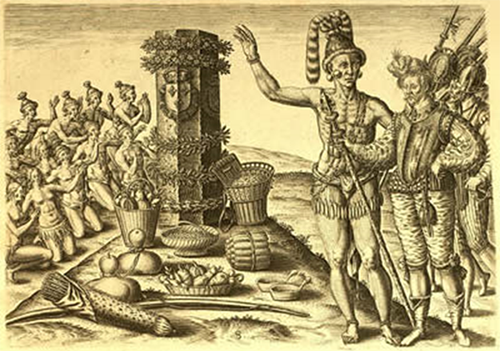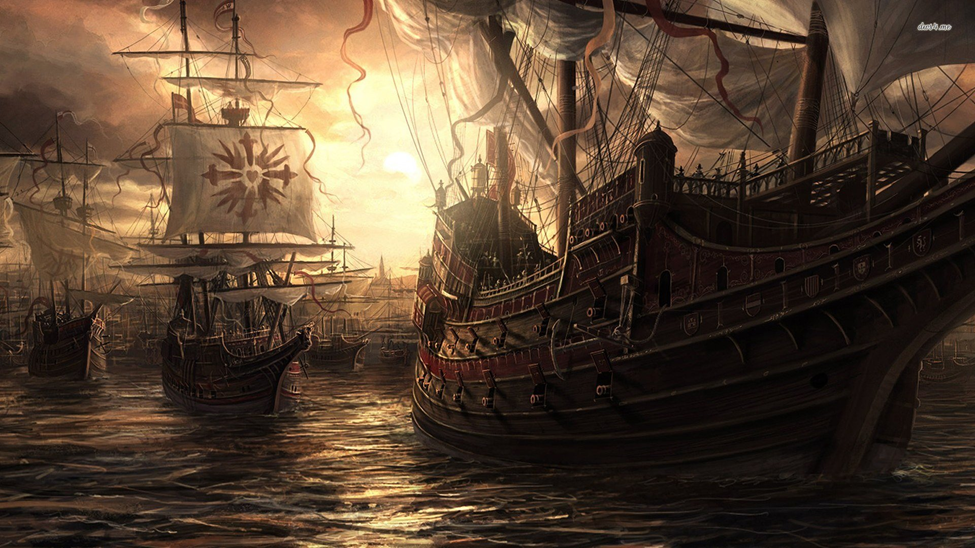Fernandina beach is the birthplace of the modern shrimping industry so naturally we have a festival that celebrates everything shrimp and much more. Please click on the Events tap to learn more about our Shrimp Festival as well as all ther great festivals that take place on Amelia Island throughout the year.
In the words of Marlene Schang who is the director and curator of the Amelia Island Museum Of History; “We live with our history and celebrate it.”
Before the first flag flew above the island, the Timucua inhabited the area they called Napoyca. From around 2500 B.C. to 1562 A.D., they lived with an abundance of vegetation and shellfish. They had no written language, but are believed to have lived long, healthy lives, due in part to their diet but primarily because of the absence of European diseases.

Their way of life continued for centuries, until the arrival of a company of Frenchmen, led by Jean Ribault, on May 3, 1562. Ribault had sailed for the New World in search of a site for a Huguenot colony. When he came upon the island, he claimed it for France and named it the Isle de Mai, for the month in which he discovered it. The French lived in relative harmony with the Timucua until they were defeated by the Spanish troops of Pedro Menendez de Aviles in 1565.

Pictured: Athore, son of the Timucuan king Saturiwa, showing Laudonnière the monument placed by Ribault.
Renamed Santa Maria by the Spanish conquerors, the island changed a lot during the nearly 200 years of Spanish possession. The Timucua were used mainly as farm labor, although they reportedly were well-treated by Spanish missionaries, who converted many to Catholicism. But the Timucua also rapidly succumbed to the newly imported diseases from Europe, principally smallpox and measles. Although the remaining Timucua still lived on Santa Maria, their council house was replaced by a wooden church.
In 1607, English Protestants began their settlement at Jamestown and made their way southward to become firmly entrenched in Carolina as well, where Charles Towne was founded in 1670. That same year, the Treaty of Madrid between England and Spain delineated the boundaries of each nation’s territories in the New World. However, the land between Carolina and St. Augustine, including Amelia Island, was not addressed and would remain in contention, leading to violent encounters between the military attachments of both powers. The island, because of its natural deep-water harbor and central location, became a haven for smugglers running illegal goods between Charleston, S.C., and St. Augustine.
One of the celebrations during Shrimp Fest is a pirate takeover symbolizing some of the Island’s turbulent past.

The English arrive when James Oglethorpe, founder of the debtors’ colony in Georgia, went on a scouting expedition southward in 1736, he came upon the island that he called the “fairest and fruitfulest,” naming it for Princess Amelia Sophia Eleanora, the third daughter of his king, George II. Oglethorpe intended to claim the island for England, but there were many more years of military engagements between the English and Spanish troops before the Treaty of Paris in 1763 gave England possession of the entire Florida territory.

“A new map of North America” – produced following the Treaty of Paris
On March 17, 1812, the Patriots took the town with no bloodshed or loss of life and raised their own flag over Fernandina, with the intent of turning the territory over to the United States when the rest of eastern Florida was conquered. Instead, President Madison received many official protests from both Spanish and English officials and gave in to the pressure, relieving Matthews of his mission and repudiating his actions. Broken-hearted, Matthews died three months later.
A little more than a year after the takeover, Spanish rule of Amelia Island resumed.
Another high point in Amelia Island’s diverse history was the creation of American Beach in the 1930s by the founders of Afro-American Life Insurance. They bought 200 acres on the southern end of Amelia Island to function as an oceanfront haven for African-Americans during an era of rigid segregation. At the height of the resort’s popularity, its homes and nightspots were frequented by celebrities like Ray Charles, Cab Calloway and James Brown. With around 100 homes from the 1940s and ’50s still in existence today, American Beach remains a quiet, beachfront community and the first stop on Florida’s Black Heritage Trail.
The Amelia Island of today is a popular residential and resort area.
To read the full histories please click on this link History Of Amelia.

Pictured: Spanish moss covered oak trees which are very typical to this area
Recent Comments